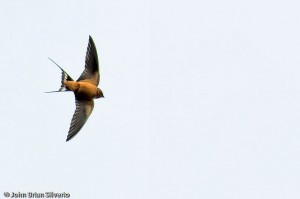 Every March the California town of San Juan Capistrano celebrates the return of cliff swallows to the mission where they flock to build their nests. This annual migration is such a predictable event that the town has built an entire tourist industry out of it.
Every March the California town of San Juan Capistrano celebrates the return of cliff swallows to the mission where they flock to build their nests. This annual migration is such a predictable event that the town has built an entire tourist industry out of it.
But in fact, the northward migration of different species of swallows happens all over the world, even right here in Knowland Park. Some time in the next week or two, we can expect to see the first barn swallows making their way back to the Bay Area from Central and South America. The migration starts with a few early scouts, then the preponderance of males, and finally the females. Soon, these beautiful, sleek birds will be swooping across the grasslands of Knowland catching insects on the fly.
This northerly migration and the corresponding migration south in the fall are truly a miracle of nature. Consider for a moment the challenge that these tiny creatures face each year: as they leave the wintering grounds in the tropics where they’ve spent the last 6 months or so fattening up for their flight, they face a perilous journey of thousands of miles. Barn swallows weigh 0.67 ounce, about the weight of half of a stick of string cheese. Yet, they make their way through the buffeting winds and storms of early spring up the Pacific Flyway to arrive in time to begin setting up territories, mating, and rearing their young.
Along the way they’ll feed on “air plankton”–insects that are swept up into the air column that swallows scoop up with the aid of the rictal bristles that surround their gaping mouths like a basket. Once on their breeding grounds, they will continue to log up to 600 miles a day feeding and gathering insects for their young.
Barn swallows are among the most graceful of all the swallows. The only swallow species with a forked tail, an adaptation that helps them maneuver, both males and females are a shiny blue-black on their backs with rust-colored chins. Females have white on their bellies and under their wings, while males have orange-colored underparts.
When the swallows arrive, they set up nesting territories and begin to construct half-cup shaped nests out of grass and pellets of mud. At one time, barn swallows built their nests on the sides of cliffs, but human-made structures have largely replaced cliffs as nest sites. The nests are built under rafters or any supporting structure that has an overhang which helps protect the young. The conversion of large areas of forest to fields and grasslands has increased the areas where swallows can forage. In return, swallows consume enormous numbers of pest insects such as mosquitoes and flies.
Bank swallows are monogamous for the breeding season, and pairs share in building the nest and brooding and feeding the young.
It’s not uncommon to see them begin their foraging flights pre-dawn and continue until after sunset. It’s possible to see them at rest on wires where they often keep up a twittering chatter.
Some people who discover that they have a family of swallows nesting under their eave, knock down the nest because of the temporary mess it creates, but others take it as an honor and sign of good fortune when birds choose to nest nearby. Far better to enjoy watching these amazing birds. They have much to teach us and our own children about hard work, perseverance in the face of adversity, and sacrifice for their young. And they are beautiful to behold.
Will you be the first to spot the barn swallows returning to Knowland Park? Post a comment to us as soon as you see them in the park and send us your photos!
 Laura Baker is an environmental activist and former Conservation Chair of the California Native Plant Society. Growing up in Missouri, she learned that the cure for most ills rests in spending time out in nature. She wishes for every child to have the experience of wholeness that nature provides. Laura holds an M.A. in Ecology and Systematic Biology.
Laura Baker is an environmental activist and former Conservation Chair of the California Native Plant Society. Growing up in Missouri, she learned that the cure for most ills rests in spending time out in nature. She wishes for every child to have the experience of wholeness that nature provides. Laura holds an M.A. in Ecology and Systematic Biology.
Laura’s Knowlander blog is dedicated to building an online library of the natural history of Knowland Park so that the public may enjoy the park for the natural heritage treasure that it is. Knowing the land is a never ending process of inquiry open to all. We welcome your comments, contributions, and photos.
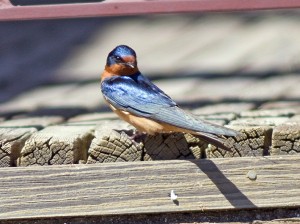
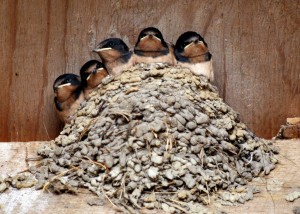
 Follow
Follow


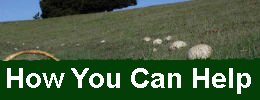




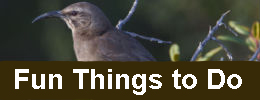
Comments are closed.